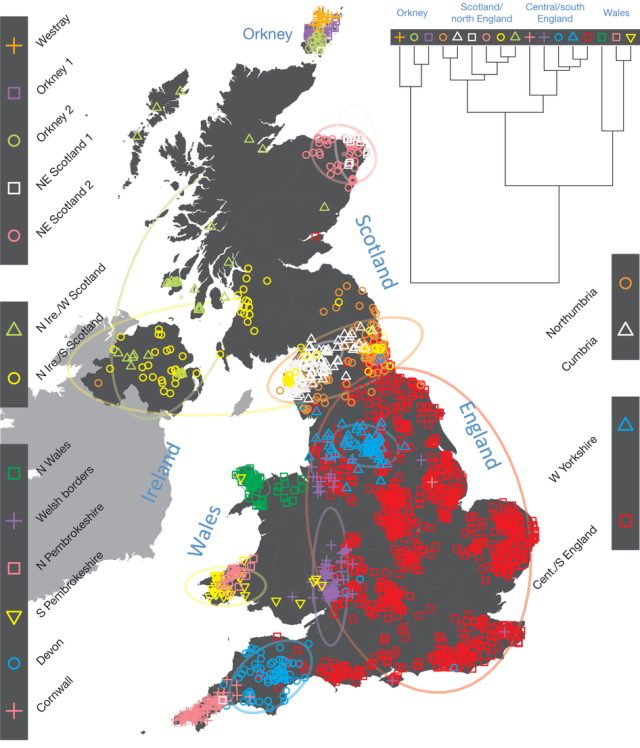Analysis shows less Viking DNA than expected, and no single group of Celts.
A fine-grained genetic analysis has created a detailed map of genetic variation across the UK. It gives us a clearer picture of the waves of migration that populated the UK and could also contribute to research on genetic diseases.
Obviously, people in the UK these days don’t always stick around where they were born, so people in a given region don’t necessarily share ancestry. But, if you can find people whose ancestry is closely tied to a particular region, it becomes possible to approximate what genomes would have been like a century ago, before people could move around so easily.
A paper published in Nature this week analyzed the genomes of 2039 people whose grandparents were all born within 80 kilometers (50 miles) of one another. This effectively meant that the researchers were sampling the genomes of the grandparents, whose average birth year was 1885 and who obviously had strong ties to a region. This allowed the researchers to investigate the genetic structure of the UK population before the mass movements of last century.
Read the rest of this article...



